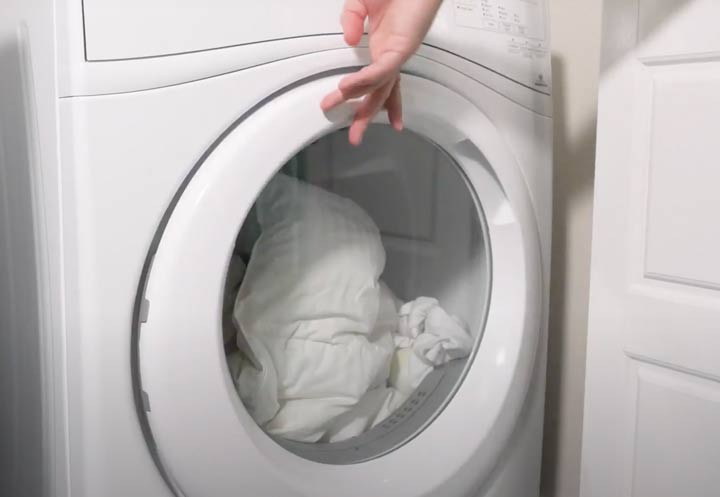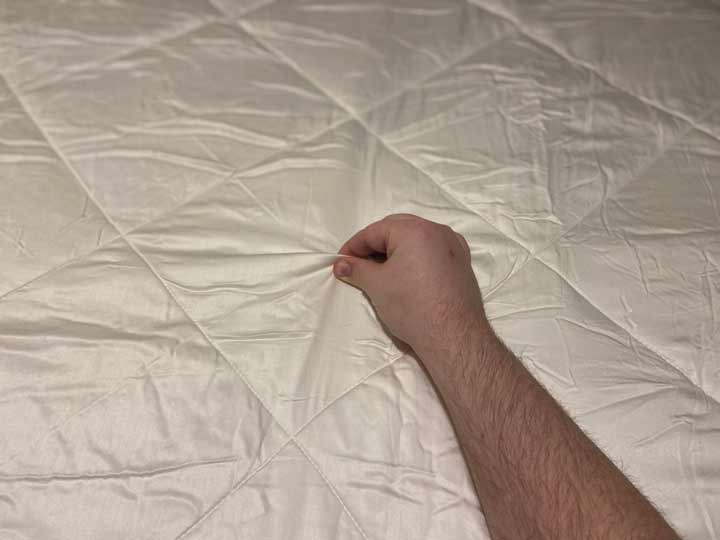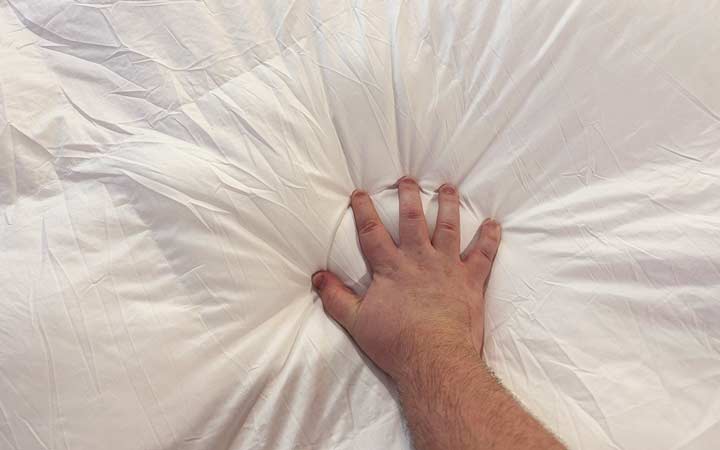Whether you’re putting away your heavy comforter for the season or just switching it out or something new, it’s important to store it correctly.
You don’t want to fold up the comforter and stick it in the back of the closet. It’s important to follow a few best practices so the comforter remains fluffy and fresh for years to come. Here are four important steps for doing just that.
Wash the Comforter
The first step is to wash the comforter, but only if it is dirty. Over-washing comforters, especially those of the down variety, can harm the filling.
If the comforter is dirty, cleaning it before storing is imperative. Food residue, dead skin cells and oils can attract bugs and cause unwanted discoloration and odors.

If you own a down comforter, you will most likely need to have it professionally cleaned. This is your best option for ensuring that the down isn’t harmed in any way.
If the comforter is filled with down alternative, it is possible to wash at home, but you should follow the care instructions to the letter.
Make Sure The Comforter Is Dry
If you do decide to wash your comforter, you should make sure it is completely dry before storing. Putting away a comforter while it is even slightly damp can cause mold or mildew to form.

If you had your comforter professionally cleaned or if you cleaned it at home, you should feel all around the comforter for any wet spots. If you find any, don’t store the comforter until it’s completely dry.
If you have a down comforter, avoid air-drying it, as this can lead to the formation of mold and mildew. If a comforter is filled with down alternative, you may let it air-dry or run it through another cycle in a large-capacity dryer.
Put the Comforter in a Breathable Bag
To help protect it from bugs and dirt, put the comforter in a breathable linen bag. This helps deny bugs access to the comforter while still letting air flow through it (which helps prevent mold and mildew). If you don’t have a linen bag on hand, you can also wrap the comforter in a linen sheet.
If you have a down comforter, you should not put it in a plastic bag, because this can also cause mold and mildew to form. If you have a down alternative comforter, it is okay to put it in a plastic bag or even vacuum seal it for protection.

Store in a Cool, Dry Place
Once you have wrapped your comforter in a linen bag or sheet, you should find a cool, dry spot to store it. You don’t want your comforter soaking up humidity, because that can encourage mold and mildew growth.
You should also keep the comforter off the ground and away from pesky insects. A linen closet or armoire would be ideal for the comforter.
RELATED: Best Reviewed Comforters

Evru/Shutterstock
Also, you should make sure you don’t store anything on top of your comforter. This can crush the down filling, making it lose its fluffiness. If you are going to store the comforter with other items, make sure the comforter sits on top.
Other Tips for Storing Comforters
If you follow the steps above, your comforter will be well taken care of and ready for the next time it’s needed. However, if you would like to go the extra mile to ensure your comforter is protected, here are some additional tips for storing your comforter.
Roll Your Comforter
Rolling your comforter, rather than folding it, is a great way to prevent excess creasing. Once you have loosely rolled your comforter, store it vertically and your comforter will remain fluffed and ready when you need it.
Consider Storage Containers
If you don’t have a closet that you would consider to be cool and dry, then a storage container might be your best bet. If you do use a storage container, ensure that you place your comforter in a breathable bag before storing it.
Clean and Inspect Regularly
If you are storing your comforter for a long period of time, it’s best to inspect it regularly to ensure that no dampness seeps in. Before using your comforter again, be sure to give it a wash to get rid of any allergens and dust that may have accumulated during its time in storage.
FAQs
What is the best way to store a comforter?
The best way to store your comforter is by loosely rolling it up and putting it into a breathable bag. It should then be stored vertically in a cool and dry environment until it is needed again.
How do you fold a comforter to fit in a bag?
It’s best to loosely roll your comforter before putting it in a bag. If your bag is too small for a rolled comforter, you may have to fold it into a rectangle before putting it in the bag.
How do you store bedding without a closet?
If you do not have a closet, you may need to get storage boxes or use a storage container. Look for a cool, dry place in your house such as under your bed or in a dresser.
Is it OK to vacuum seal a down comforter?
You can vacuum seal a comforter made out of down alternative fibers. But if you have a comforter made with real feathers, you will need to leave some air inside the vacuum bag so it doesn’t get damaged.


